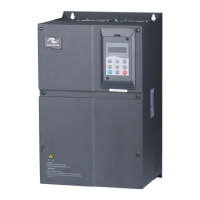- 169 -
Chapter 8 EMC (Electromagnetic
Compatibility)
8.1 Definition
Electromagnetic compatibility is the ability of the electric equipment to run in
the electromagnetic interference environment and implement its function stably
without interferences on the electromagnetic environment.
8.2 EMC Standard Description
In accordance with the requirements of the national standard GB/T12668.3,
the servo driver needs to comply with electromagnetic interference and anti-
electromagnetic interference requirements.
The existing products of our company apply the latest international
standard—IEC/EN61800-3: 2004 (Adjustable speed electrical power drive
systems
part 3:EMC requirements and specific test methods), which is
equivalent to the national standard GB/T12668.3.
IEC/EN61800-3 assesses the driver in terms of electromagnetic interference
and anti-electronic interference. Electromagnetic interference mainly tests the
radiation interference, conduction interference and harmonics interference on
the driver (required for the driver for civil use)Anti-electromagnetic interference
mainly tests the conduction interference rejection, radiation interference
rejection, surge interference rejection, fast and mutable pulse group
interference rejection, ESD interference rejection and power low frequency
end interference rejection (specific test items including: 1. Interference
rejection tests of input voltage sag, interrupt and change; 2. Phase conversion
interference rejection test; 3. Harmonic input interference rejection test; 4.
Input frequency change test; 5. Input voltage unbalance test; 6. input voltage
fluctuation test).
The tests shall be conducted strictly in accordance with the above
requirements of IEC/EN61800-3, and the products of our company are

